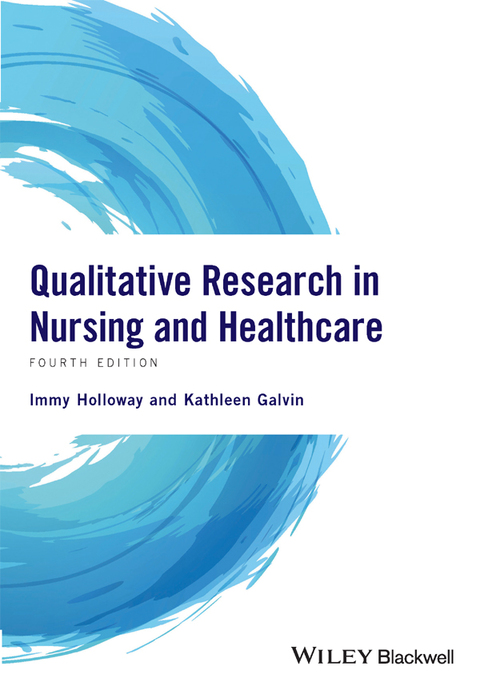Description
Efnisyfirlit
- Cover
- Title Page
- Copyright
- Dedication
- Preface
- About the Authors
- Acknowledgements
- Part One: Introduction to Qualitative Research: Starting Out
- Chapter 1: The Main Features and Uses of Qualitative Research
- What is Qualitative Research?
- The Characteristics of Qualitative Research
- The Place of Theory in Qualitative Research
- The Use of Qualitative Research in Healthcare
- Choosing an Approach for Health Research
- Problematic Issues in Qualitative Research
- Conclusion
- Summary
- References
- Further Reading
- Chapter 2: The Paradigm Debate: The Place of Qualitative Research
- Theoretical Frameworks and Ontological Position
- The Paradigm Debate
- Conflicting or Complementary Perspectives?
- Final Comment
- References
- Further Reading
- Chapter 3: Initial Steps in the Research Process
- Selecting and Formulating the Research Question
- The Literature Review
- Writing a Research Proposal
- Access and Entry to the Setting
- Summary
- References
- Further Reading
- Chapter 4: Ethical Issues
- The Basic Ethical Framework for Research
- Ethics in Qualitative Research
- Researching One’s Peers
- The Research Relationship
- Research in the Researcher’s Workplace
- The Role of Research Ethics Committees
- Summary
- References
- Further Reading
- Chapter 5: Supervision of Qualitative Research
- The Responsibilities of Supervisor and Student
- Writing and Relationships
- Practical Aspects of Supervision
- Single or Joint Supervision
- Problems with Supervision
- Summary
- References
- Further Reading
- Part Two: Data Collection and Sampling
- Chapter 6: Interviewing
- Interviews as Sources of Data
- The Interview Process
- Types of Interview
- Probing, Prompting and Summarising
- The Social Context of the Interview
- Unexpected Outcomes: Qualitative Interviewing and Therapy
- Length and Timing of Interviews
- Recording Interview Data
- The Interviewer–Participant Relationship
- Problematic Issues and Challenges in Interviewing
- Interviewing Through Electronic Media
- Ethical Issues in Interviewing
- Strengths and Weaknesses of Interviewing
- Summary
- References
- Further Reading
- Chapter 7: Participant Observation and Documents as Sources of Data
- Participant Observation
- The Origins of Participant Observation
- Immersion in Culture and Setting
- Documentary Sources of Data
- Images as Sources of Data
- Summary
- References
- Further Reading
- Chapter 8: Focus Groups as Qualitative Research
- What is a Focus Group?
- The Origin and Purpose of Focus Groups
- Sample Size and Composition
- Conducting Focus Group Interviews
- Analysing and Reporting Focus Group Data
- Advantages and Limitations of Focus Groups
- Critical Comments on Focus Group Interviews in Healthcare
- Summary
- References
- Further Reading
- Chapter 9: Sampling Strategies
- Sampling Decisions
- Purposeful (or Purposive) Sampling
- A Variety of Sampling Types
- Giving a Label to the Participants
- Summary
- References
- Further Reading
- Part Three: Approaches in Qualitative Research
- Chapter 10: Ethnography
- The Development of Ethnography
- Ethnographic Methods
- Ethnography in Healthcare
- The Main Features of Ethnography
- Fieldwork
- Doing and Writing Ethnography
- Pitfalls and Problems
- Summary
- References
- Further Reading
- Chapter 11: Grounded Theory
- History and Origin
- The Main Features of Grounded Theory
- Data Collection, Theoretical Sampling and Analysis
- Pitfalls and Problems
- Glaser’s Critique and Further Development
- Constructivist Grounded Theory
- Which Approach for the Health Researcher?
- Summary
- References
- Further Reading
- Chapter 12: Narrative Inquiry
- The Nature of Narrative and Story
- Narrative Research
- Illness Narratives
- Narrative Interviewing
- Narrative Analysis
- Problematic Issues
- Conclusion
- Summary
- References
- Further Reading
- Chapter 13: Phenomenology
- Intentionality and the Early Stages of Phenomenology
- Schools of Phenomenology
- The Phenomenological Research Process: Doing Phenomenology
- Phenomenology and Health Research
- Choice of Approach: Descriptive or Interpretive Phenomenology
- Procedures for Data Collection and Analysis
- Summary
- References
- Further Reading
- Chapter 14: Action Research
- The Origins of Action Research
- Action Research in Healthcare
- The Main Features of Action Research
- Practical Steps
- Trustworthiness in AR
- Problems and Critique
- Summary
- References
- Further Reading
- Chapter 15: Additional Approaches
- Overview
- Features and Purpose of Case Study Research
- Conversation Analysis
- Critical Incident Technique
- Discourse Analysis
- Performative Social Science
- Summary
- References
- Further Reading
- Chapter 16: Mixing Methods
- The Nature of Mixed Methods Studies
- Doing Mixed Methods Research
- Types of Mixed Methods Research
- The Place and Purpose of the Literature
- Triangulation
- Critique of MMR
- Conclusion
- Summary
- References
- Further Reading
- Part Four: Data Analysis and Completion
- Chapter 17: Data Analysis: Procedures, Practices and Use of Computers
- Coding and Categorising
- Problems of QDA
- Computer-Aided Analysis of Qualitative Data
- Summary
- References
- Further Reading
- Chapter 18: Establishing Quality: Trustworthiness and Validity
- Quality
- An Alternative Perspective: Trustworthiness
- Strategies to Ensure Trustworthiness
- Quality and Creativity
- Summary
- References
- Further Reading
- Chapter 19: Writing up Qualitative Research
- The Research Account
- Use of the First Person
- The Format of the Report
- Critical Assessment and Evaluation
- Guide to Research Evaluation
- Publishing and Presenting the Research
- Summary
- References
- Further Reading
- Final Note
- References
- Glossary
- Index
- End User License Agreement








Reviews
There are no reviews yet.